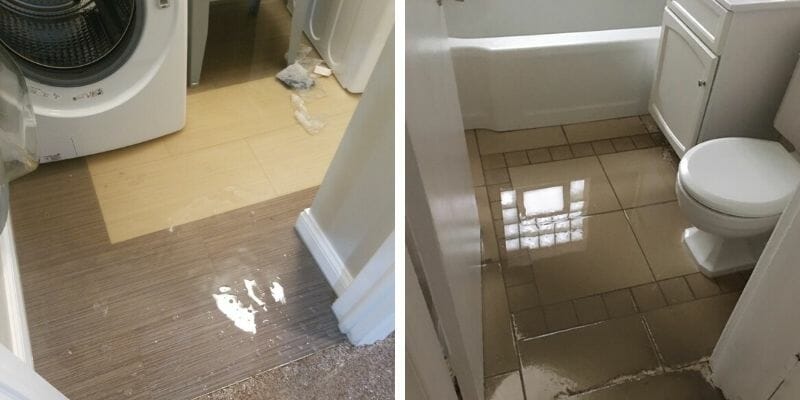Are you trying to locate related information about How to Repair and Prevent Bathroom Water Damage??

Water damage frequently occurs in the washroom because of the water utilized everyday. Occasionally, the damages could be a little mold and mildew from the shower. Other times, it's enormous damage on your flooring. Whatever it is, it is constantly excellent to know the cause as well as avoid it prior to it takes place.
This overview will certainly go through some of the typical reasons for water damage in the shower room. We will certainly additionally analyze what you can do to stop these causes from damaging your bathroom. Let's dive in.
These are the typical reasons you would have water damage in your restrooms as well as exactly how you can identify them:
Excess Dampness
It's trendy to have that lengthy shower and also dash water while you hem and haw and also imitate you're performing, but sometimes these acts could cause water damage to your bathroom.
Splashing water around can cause water to go to edges and also create mold and mildews. See just how you spread out excess wetness around, as well as when you do it, clean it up to stop damages.
Splits in your wall surface floor tiles
Shower room wall tiles have been specially designed for that objective. They shield the wall surface from wetness from people taking showers. However, they are not indestructible.
Sometimes, your washroom wall surface ceramic tiles crack and permit some dampness to leak into the wall. This can possibly ruin the wall if you do not take any type of action. If you notice a split on your wall surface ceramic tiles, fix it immediately. Do not wait up until it destroys your wall surface.
Overruning toilets and sinks
As human beings, often we make mistakes that can trigger some water damage in the restroom. As an example, leaving your sink faucet on can trigger overflowing and also damage to other parts of the shower room with wetness.
Also, a malfunctioning toilet can trigger overflowing. As an example, a broken commode deal with or other parts of the tank. When this happens, it can damage the flooring.
As soon as you notice an overruning sink or toilet, call a plumbing professional to assist manage it right away.
Ruptured or Leaking Pipelines
There are lots of pipelines bring water to various parts of your restroom. Some pipelines take water to the bathroom, the sink, the faucets, the shower, as well as several other areas. They crisscross the small location of the bathroom.
Occasionally, these pipes can get rustic and also burst. Various other times, human action might create them to leak. When this occurs, you'll find water in the corners of your washroom or on the wall.
To identify this, look out for bubbling wall surfaces, molds, or mold. Call a professional emergency situation plumber to fix this when it occurs.
Roof covering Leaks
Often, the trouble of water damage to the restroom may not originate from the restroom. For instance, a roof covering leak could trigger damages to the washroom ceiling. You can find the damage done by considering the water stains on the ceiling.
If you find water spots on your ceiling, inspect the roof covering to see if it's harmed. Then, call an expert to assist address the concern.
Conclusion
Water damage to your restroom can be frustrating. Nonetheless, you can manage it if you prevent some of the causes pointed out in this overview. Call a specialist emergency situation plumber if you notice any serious damage.
How to Prevent Water Damage in Your Bathroom?
Water damage repair is an expensive, meticulous, and lengthy process. Unfortunately, bathrooms are the most susceptible rooms to water damage due to toilets, showers, and sinks. Pipes and fixtures wear out over time and are not immune to damage. But all is not lost, as there are ways to prevent water damage from occurring in your bathroom.
Check Your Plumbing
Nothing lasts forever, especially pipes, which can rust and begin leaking over time. You should periodically conduct pipe inspections and pay attention for any musty smells or water stains that may indicate you need water damage repair. Here are some things to check:
Frequently test valves for your toilet, shower, and sink to ensure they are properly working. Check faucet supply lines hidden under vanities and replace when needed. Replace cracked or deteriorating caulking along sinks, tubs, and showers. If you notice a clog in your sink, call in a professional. Since you can’t check the pipes in the wall, keep an eye out for stains, drywall bubbling, musty smells, and excess moisture; if the bathroom is on a second level, check the ceiling of the room directly below for these signs. Don’t Overwork Your Toilet
One of the most common reasons bathrooms need water damage repair is due to overflowing toilets. Save yourself the hassle of cleanup by being mindful and not pushing your toilet to extreme limits. If you have young children, it is especially important to keep an eye on them when they are in the bathroom and to teach them how to avoid clogging the toilet. Here are some more tips to help prevent your toilet from overflowing:
If you have a septic tank, only use septic-safe toilet paper Do not flush anything down the toilet besides toilet paper; items like diapers and sanitary napkins will clog the piping Pay attention to your toilet’s water level: If it’s low, it could mean it is partially clogged or that there is a crack in the toilet bowl https://www.alure.com/home-improvements-blog/resources/how-to-prevent-water-damage-in-your-bathroom

We were brought to that editorial on How to Repair and Prevent Bathroom Water Damage? from someone on another web blog. Sharing is caring. Helping people is fun. We recognize the value of reading our article about How to Repair and Prevent Bathroom Water Damage?.
Make An Appointment